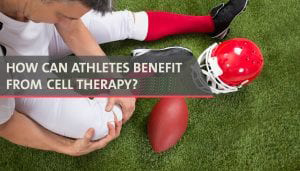How Can Athletes Benefit From Regenerative Therapy?
Keep in mind that there are many forms of regenerative therapy that are not specifically stem cell as regulated by the FDA.
Athletes put their bodies to the test every day. Some days might be more vigorous than others, but each day is a step to becoming better at their sport. But there are limitations to how far they can push themselves, and if they go past that limitation there is risk of serious injury.
Regardless of whether you play soccer, football, baseball or are a dancer, you are prone to injury for a variety of reasons. Athletes know this fact very well, and when they get seriously injured there are a few options to consider. Regenerative medicine therapies, for instance are an alternative. Let’s go over what it is and how it can benefit an athlete like you.
What is Regenerative Medicine Therapy?
Amnion nanoparticle technologies are also referred to as human acellular, or tissue based products (HCT/Ps). Adipose (Mesenchyme) regenerative therapy is really structural support therapy. Both can be effective treatments for a wide variety of injuries, musculoskeletal disorders, degenerative arthritis, and even peripheral arterial related disease.
Placental derived therapy products are easier for the patient to receive as no harvesting is required. Harvesting is required for autologous cells (cells that come from your own body). Generally, however, this is not overly painful, and is done as an outpatient procedure that does not require any downtime.
After the cells are harvested, they are then applied at the injured site to provide support and/or reduce pain.
What Kinds of Injuries Can Regenerative Therapies Help with?
- Torn meniscus (knee injury)
- Joint space narrowing – occurs when cartilage in a joint wears away and becomes painful, stiff or limited to its range of motion
- Ligament injury
- Tendon injury
- Muscle injury
- Joint injury
Sometimes theses injuries are preventable, but most of the time they are caused by overuse or repetitive stress. Overuse occurs when, for example, you’re playing baseball and pitching too many innings. The repetitive motion places stress on joints, tendons, ligaments and muscles. This can cause painful damage. Improper form can produce similar injuries, and stretched, torn or strained ligaments can cause years of pain and discomfort.
These injuries can also happen by accident, or improper training or use of equipment. Physical contact is common in sports, and that’s why it’s important to know and perform the right techniques and how to manage any equipment properly. It doesn’t take much effort to easily and seriously damage a part of your body.
It’s important to note that more aggressive regenerative therapies are often not suited for milder injuries, like when tendons become overworked, swollen or inflamed. While ligaments attach bone to bone, tendons are responsible for attaching muscle to bone. Tendons, like ligaments, can respond to proliferative injections (medications that stimulate the body’s natural regeneration process like a scab that heals skin) – for these tendon and ligament injuries you don’t need a treatment as robust as more aggressive regenerative therapies. For cases with moderate severity there are still other alternatives. For example, office based procedures such as Ultrasound Guided Percutaneous Tenotomy with a Platelet Rich Plasma (PRP) patch can provide wonderful results.
HCT/Ps and Adipose derived structural support cell therapies are typically reserved for cases involving joint space narrowing or for those people that are trying to avoid or prevent surgery. With autologous (adipose) therapy the “eureka” day often occurs at 21 days and the wound healing response has peaked by 30 days. For placental derived therapy results are usually self-evident after one month but may also continue to express themselves for up to 90 days.
In addition to recommending specific types of treatment, changing how the athlete performs or reducing the level of athletic participation for a while will allow an injury to heal better.
Regenerative therapy is not an immediate quick-fix to a problem. The targeted site needs time to readjust to gain its full strength and function back. Improperly treated and incompletely healed sports injuries can set the stage for lifelong problems. When it comes to sports injuries, “no pain, no gain” during competition may be a catchy phrase, but it is bad advice; “slow but sure” makes a lot more sense.
It is also important to identify environmental and training factors that can impact injury. Was the playing field in bad shape? Was there safety equipment used? Was training or fitness adequate? Was coaching poor? If these factors are neglected, injury is likely to reoccur.
If you’re an athlete or knows of an athlete with a serious injury that can be helped with regenerative therapy in Greenville, don’t hesitate to give us a call. We would love to chat with you about your situation, what we can do to help to find an appropriate treatment for your condition. Contact us at 864-235-1834.






